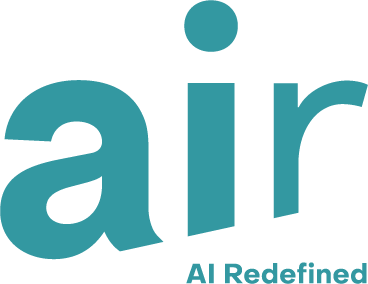AIR to introduce Cogment Verse at the 22nd AAMAS conference in London
AI Redefined is happy to announce the first public demonstration of Cogment Verse, its research platform built upon Cogment. It was designed for accessibility to help accelerate research in the fields of human-in-the-loop learning and multi-agent reinforcement learning. Alongside the Cogment Verse demo, results of two ongoing research collaborations will be showcased as well.
This edition of the International Conference on Autonomous Agents and Multiagent Systems (AAMAS) will be AIR’s biggest conference presence to date, and is a testament to our commitment in supporting and participating in the research community. Sai Krishna Gottipati and Luong-Ha Nguyen from our reinforcement learning research team and Matthew E. Taylor, tenured associate professor in computer science at the University of Alberta and AIR’s Research Director, will attend.
In the meantime, here are the three papers covering different recent collaborations and Cogment Verse.
Hiking up that HILL with Cogment Verse: Train & Operate Multi-agent Systems Learning from Humans
Cogment was released in fall 2021 with the objective of addressing the software engineering complexities of building collaborative Human-AI systems and supporting multiple AI techniques and environments from industrial simulations and digital twins to IoT sensors and effectors. It is designed to be a production-ready platform, and is successfully used in several industries including defence, aerospace, manufacturing and energy.
To complement Cogment, we now introduce Cogment Verse: a free research platform aimed at facilitating Human-In-the-Loop Learning (HILL) and Multi-Agent Reinforcement Learning (RL) experiments specifically designed for the research community. Over the past months, early versions of Cogment Verse have been successfully used by multiple research teams, and it’s now ready for a wider audience. Our ultimate goal is to enable and facilitate the development of intelligence ecosystems where AI agents and humans can learn from each other and collaborate to tackle increasingly complex or sensitive use cases.
Checkout the demo at AAMAS during both Thursday’s June 1st sessions
Read the paper (camera-ready version).
Human-AI interactions in real-world complex environments using a comprehensive reinforcement learning framework
This screenshot shows the main user interface for the Cogment-based experimentation platform implemented for this work. The hatched circle on the left is a restricted area that the team of five blue agent defends. On the right side, the single red dot is the UAV attacker.
Responsible military AI requires humans to be able to contribute their valuable expertise to AI training and deployment. That’s why many military strategists call for “human-machine teaming” (HMT), an innovative technique in which humans and AI learn and act together continuously. Research around HMT is proving to be difficult as it requires multiple moving pieces to integrate together in an easy-to-use experimentation platform: simulated environment, simulation autonomous platforms, interactive command & control dashboards and AI agents. The collaboration between AIR, Thales, the IRL Lab & the GRAIL Lab at University of Alberta and JACOBB, financed by NSERC and PROMPT aims at experimenting with multiple human-ai interactions modalities in a real-world scenario involving unmanned aerial vehicles (UAVs) defending a critical infrastructure.
The work we present here shows the latest results of a pilot study involving human operators. We studied the impact of human-provided demonstrations as well as interesting qualitative results when comparing the behavior of human-ai teams with systems involving only humans or only ai.
Checkout the work at AAMAS during Tuesday’s May the 30th Adaptive & Learning Agents workshop.
Read the paper (camera-ready version).
Do As You Teach: A Multi-Teacher Approach to Self-Play in Deep Reinforcement Learning
A snippet of a teacher agent (in blue) setting a goal for a student (in green) which learns by trying to reach it.
In traditional RL methods, we train policies to enable to perform a single task in an environment. The ability to train goal-conditioned policies enables agents to fulfill multiple tasks on a given environment, potentially even unseen ones. This is a key ingredient in building more general agents, in particular agents able to fulfill any task requested by a human at runtime.
We partnered with a group of researchers to develop and evaluate a novel method generating a curriculum of goals to train RL agents with a teacher / student approach. Our formulation is applicable to any RL algorithm and we were able to show that students were able to perform better with increasing number of teachers.
Checkout the work at AAMAS during Wednesday’s May the 31st first poster session.
Read the paper (camera-ready version).
Researcher? Industry innovator? Get in touch with us!
If you are a research group, we are happy to support you in your usage of Cogment and Cogment Verse.
Of course, AIR isn’t involved only in research; we actually leverage that work with our customers to industrialize these methods. If you have projects that could benefit from AI agents and humans learning and collaborating together, feel free to contact us as well!
You can reach us directly on our Discord server, or via email.


